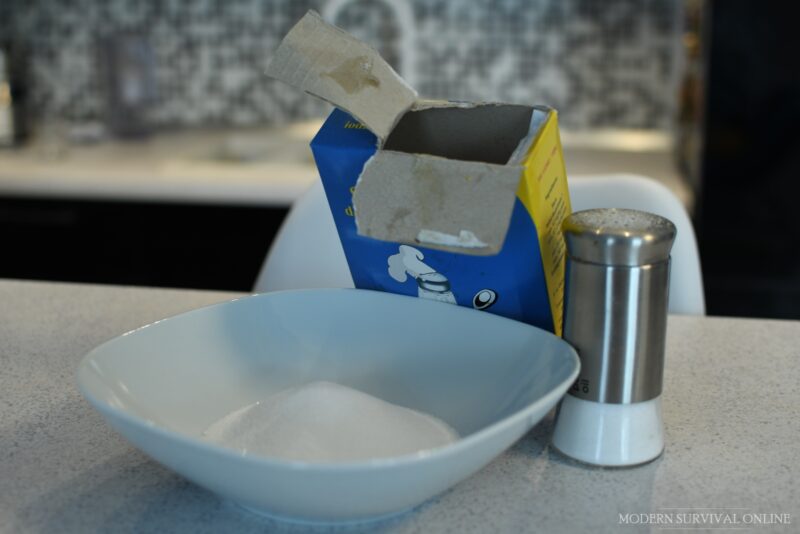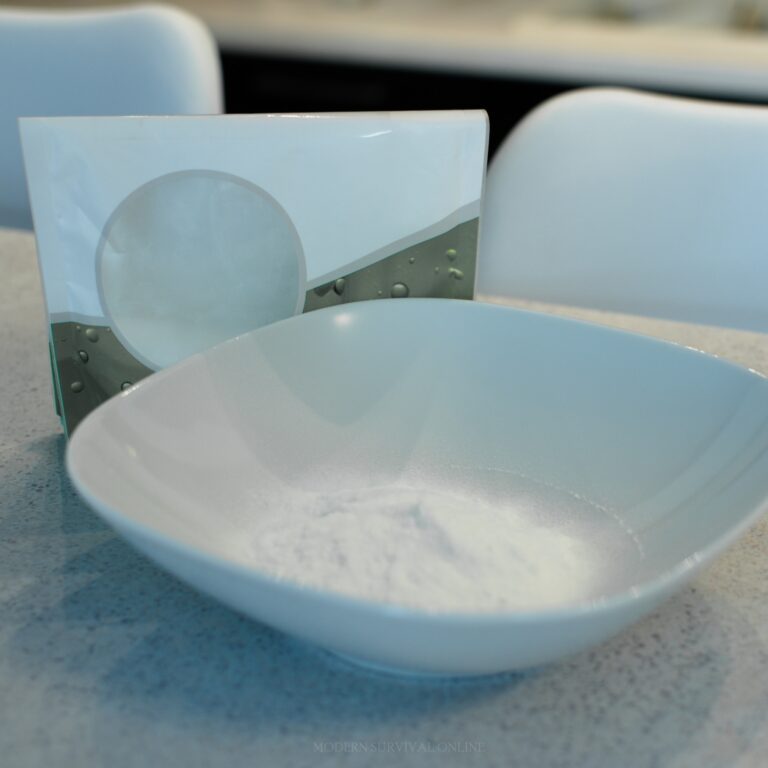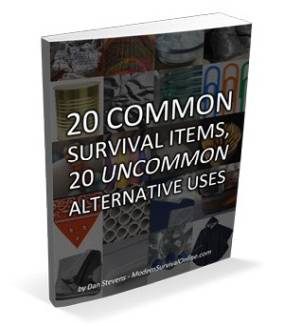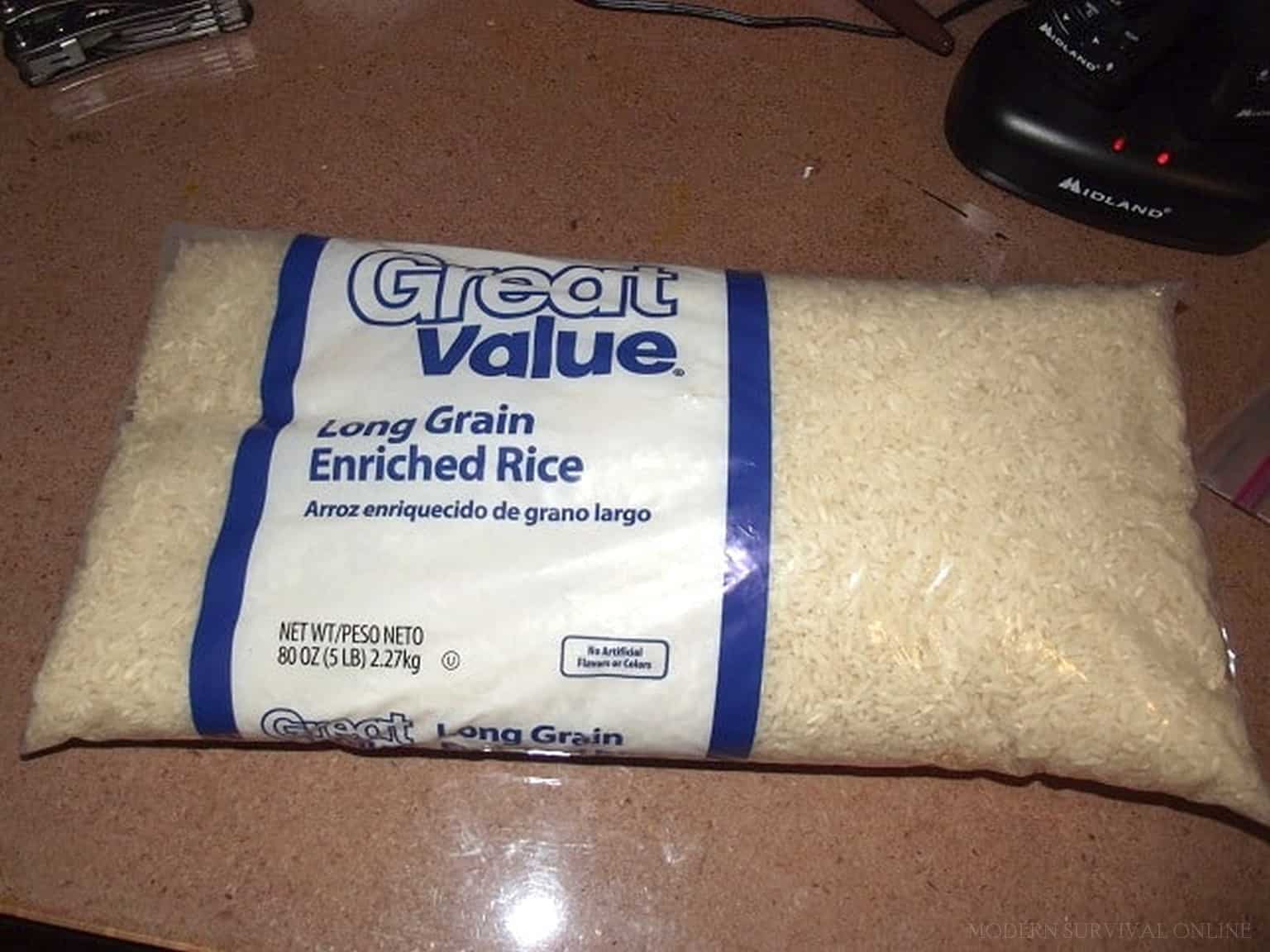Do you know what desiccant packs are? You know those little packets full of beads that are labeled “Do not eat”? The ones that come in all of your electronics and certain food packages? That’s them.
These packs have an important function: they absorb moisture from the air around them. Moisture that causes corrosion, spoilage, and other problems.
Unless you live in the driest place imaginable, moisture can always be your enemy when storing anything long-term, and even for the short term. That’s why smart preppers use these desiccant packs liberally when storing food, papers, electronics, tools, guns, and more.
But the costs of buying them can add up over time, and when supply lines are dodgy you might not be able to get them at all. That’s when it pays to know how to make your own from other common materials.
In this article, I’ll be telling you about 11 desiccant alternatives that can do the job as the genuine article.
How Do You Use These Materials?
Using genuine desiccant packs is easy, but how do you use these materials? It depends on the type of material.
Certain things that are coarse and chunky you can load into cloth sachets of your own or even use something like an old sock that is still in good shape.
For other materials, particularly highly reactive ones or ones that are prone to leaking when saturated, putting them inside a plastic or glass jar that has a series of holes either poked in the jar itself or in the lid is your best bet.
You might need to use a little creativity so that your chosen media can do its job of absorbing moisture without endangering the surrounding area or making a mess. I’ll address that item by item in the corresponding sections, no worries…
Rice
Here’s an old-school trick that you might have known already. Rice tends to be quite absorbent, and it is certainly available everywhere and extremely cheap.
Have you ever heard about people rescuing a phone or other device that got dropped in water by covering it in a bowl of rice? It can actually work sometimes!
Rice can do the job in a small space, but keep in mind it absorbs water fairly slowly, and it will turn mushy and mold over time. Because of that, it’s not a good choice for chronically humid or damp environments.
Another problem is that it’s highly prone to attracting rodents and insects! Wherever it is stashed, make sure these critters can’t get to it or you might have bigger problems.

Salt
Salt is another time-honored method for absorbing moisture, and something as simple as a big bowl of salt might deal with dampness and humidity. It has a high capacity and absorbs water very quickly because of its reactivity. Like rice, it is also ubiquitous and very, very cheap.
As it absorbs water, salt will start to clump up into rock-like formations, and this can reduce the efficiency of the salt trapped inside or below, so periodically shaking or breaking it up helps.
Also, once salt reaches maximum capacity it will start to turn into a runny slurry, so stay on top of changing it out or keep it in a waterproof container.

Baking Soda
You already know that baking soda is useful for absorbing and neutralizing unwanted odors, but it also does a fairly good job of dealing with high humidity and dampness.
But make no mistake: baking soda works a lot better against odor than it does against moisture. You can use it, and it will work, but don’t expect great things from it if you’re dealing with serious dampness or a constantly wet location.
The good news is that it’s easy to handle, safe, and very, very cheap so there’s no reason you can’t put it to use if you already have it on hand.
Cornstarch
Another pantry staple, cornstarch is more commonly used in the kitchen for various recipes and as a thickening agent. That said, it will absorb moisture and turn gummy, although it doesn’t really lock it into place like some of the other materials on our list.
Despite this, it is a cheap, completely safe, and expedient option.
I’ve used cornstarch myself to keep a toolbox full of tools stored in an outdoor shed from getting all rusty. Kept in a waterproof plastic or glass bowl with a lid, it can do an okay job in a confined space.
But take a tip from me and stay on top of changing it out regularly or you’ll have a mess to deal with.

Activated Charcoal
Another famously effective odor absorber, and a material that is known for its purifying and detoxifying properties, activated charcoal is basically charcoal that has been processed in a way to maximize its surface area, meaning it can hold more of anything it comes into contact with and lock it down.
This stuff works superbly for dealing with musty, nasty odors and it’s also surprisingly good at taming moisture and dampness. Still, this is one of the most expensive items on our list and something you cannot get in bulk from just anywhere.
If you’re going to go this route, you might as well get genuine desiccant packs unless you already have lots of it on hand. If you do, try to put it in a wide, low-covered container to maximize the surface area exposed to the surrounding atmosphere.
Leaving it open or putting it in a cloth container is just going to make a huge mess in time because of its dustiness.
Calcium Chloride
Calcium chloride is a fantastically effective material for combating moisture and even lowering ambient humidity levels significantly. For use inside a damp room, closet, garage, or other structure, it works very well.
But, you have to use it cautiously and carefully. For starters, it will readily and rapidly suck moisture out of your skin and can cause burns. It’s also really rough on mucous membranes.
Once it is overloaded, it will readily release the absorbed moisture which might aggravate the problem you’re trying to solve. It also has a tendency to corrode metals that it is in contact with, meaning proper containment is more important than other materials we’ve talked about so far.
If you have a serious moisture problem that’s endangering enough of your gear or materials, it can be a good tool as long as you take appropriate precautions…
Cement
A good one-and-done improvised solution for moisture control is just to use a powdered cement mix. In high-humidity areas or damp locations, it will steadily absorb moisture and start to harden in the process.
The obvious downside is that once it hardens it is no good as a DIY desiccant anymore and you’ll have to replace it. I hope it’s also obvious that cement can be very destructive to whatever it is in contact with when it hardens.
Keep it securely contained if you are using it for this purpose or don’t even try!
Diatomaceous Earth
A prepper’s best friend, diatomaceous earth or DE has many uses around the home, garden, and barnyard. It works wonderfully as a natural insecticide, de-lousing agent, soil amendment, and more, and it also happens to be very absorbent.
Made from the crushed and powdered shells of ancient, tiny aquatic creatures called diatoms, it is similar to activated charcoal in how it works: the craggy individual particles have an extremely high surface area that can lock away moisture.
All in all, it works pretty well, but it tends to be dusty and so you need to contain it properly. I prefer to keep it in a glass jar with holes poked in the lid.
Also, make sure you get food-grade DE! You don’t want the pool-grade stuff: pool-grade DE contains silica which can be a serious inhalation hazard, so you don’t want to risk it.
Quicklime
Quicklime, also known as calcium oxide, is phenomenally water-absorbent and great at taming both humidity and latent moisture.
Sadly, it’s kind of a deal with the devil: this stuff is unbelievably reactive and it generates heat as it absorbs moisture. It generates enough heat to potentially ignite flammable materials or burst closed containers.
Worse, it is highly caustic and can easily burn your skin. Proper handling and protective equipment are a must if you’re going to work with this stuff, and because of these risks, it’s just not worth it for anything but the most severe moisture problems.
Even then, if you can’t control against the risk of a possible fire, you’ll be trading out one disaster for another.
I’ll leave the decision up to you, but if you decide to give it a try you must account for all eventualities when handling and placing it!
Montmorillonite Clay
An extremely porous type of natural clay found in France, once dried and calcinated this material can absorb up to 25% of its total weight in water. Not bad at all!
Best of all, you can reuse Montmorillonite clay by gently heating it to dry it out, but once it is heated too much or at too high a temperature, it will harden and stop absorbing water. It’s effective, natural, and safe to handle but expensive for this purpose.
Bentonite Clay
If you have a cat, bentonite clay might be ringing a bell right now. If you ever read the ingredients list on a bag of kitty litter, you probably noticed it!
Bentonite clay is a naturally occurring type of clay mined from Wyoming, and as expected, is renowned for its absorptive qualities. Aside from kitty litter, it is used in many other industries as a dedicated moisture control agent.
This is one of the best options to use in a sock or other cloth container because it locks moisture in tightly and won’t leak. This can make it a versatile option for storing in closed containers or other small spaces.


Like what you read?
Then you’re gonna love my free PDF, 20 common survival items, 20 uncommon survival uses for each. That’s 400 total uses for these dirt-cheap little items!
We will not spam you.

















